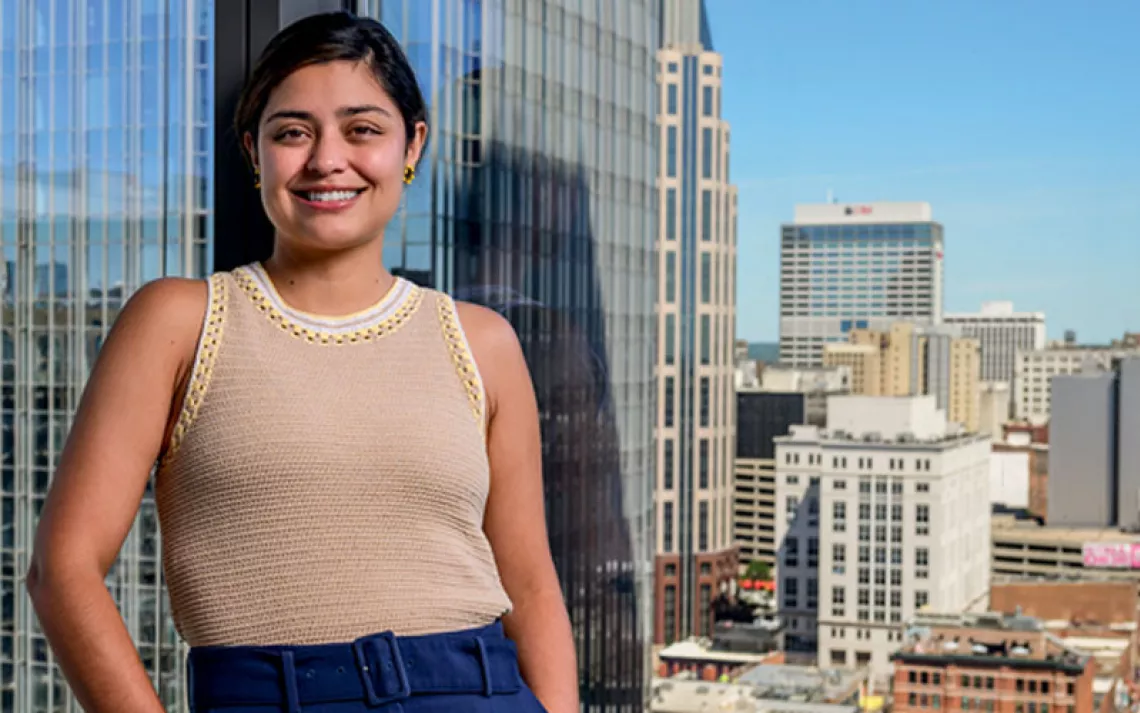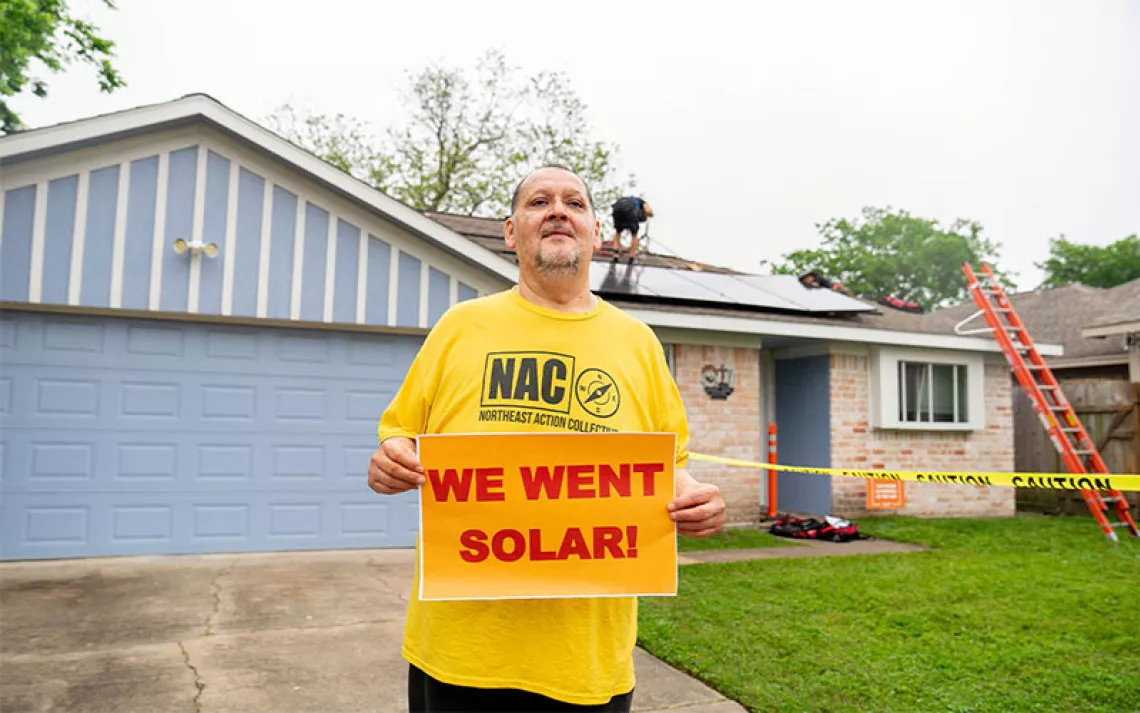Bringing Light to the “Dark State”
The story behind Virginia’s contagious Solar Schools Initiative
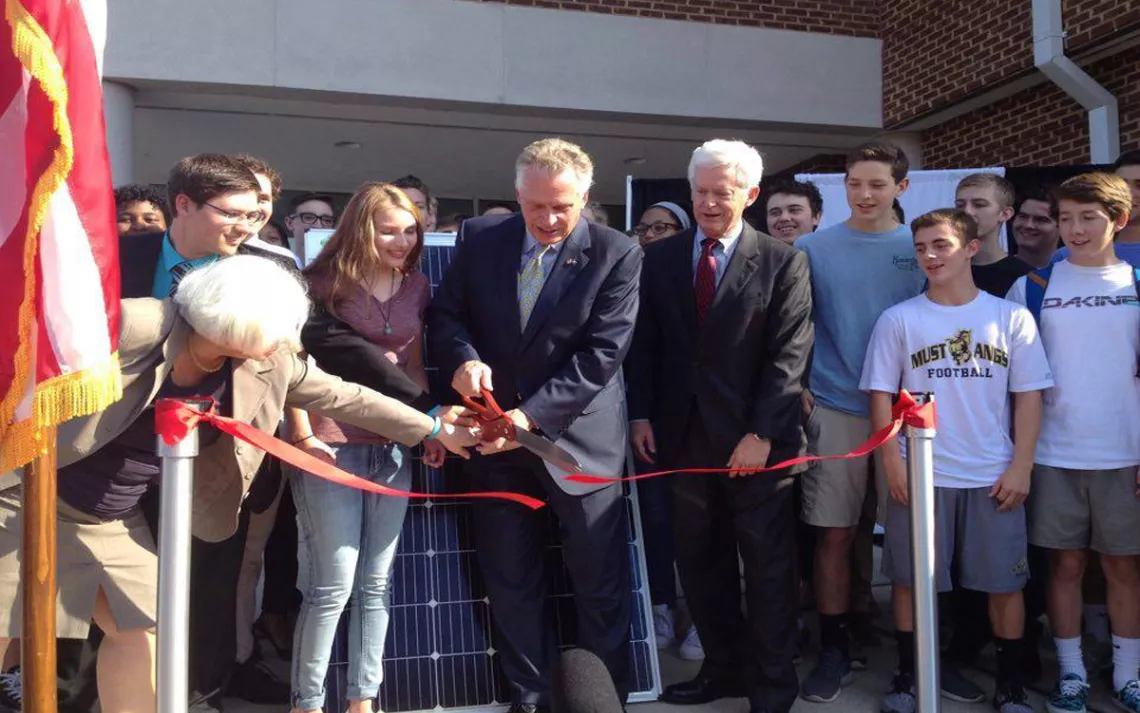
Virgina governor Terry McAuliffe cuts the ribbon symbolizing the installation of solar atop six Albemarle County public schools.
|Photos courtesy of the Sierra Club's Virginia Chapter.
Some solar industry professionals call Virginia “The Dark State.” Despite having the necessary workforce, financial resources, and sunshine, the Old Dominion state, as of the end of 2016, only generated 29 watts of solar energy per capita. Neighboring North Carolina produces ten times that, and solar-per-capita leader Nevada eclipses Virginia by a factor of 25. The reason? For several years, electric utility giants like Dominion Energy (formerly Dominion Resources), fearful of losing their customers, used their political weight to blockade solar development. That’s according to Tony Smith, CEO of Virginia-based solar company Secure Futures, who says the result has been a market climate cautious of solar energy. However, thanks to a sweeping advocacy campaign—as well as an intrepid high schooler from the Albemarle County Public School System—that’s slowly changing.
“I’ve always been interested in how I can make the most positive change for environmental issues,” says Amory Fischer, a recent Virginia Tech grad whose obsession with renewable energy brought the then-high school sophomore into the orbit of the Sierra Club in 2013. Fischer worked with the Club to finance discount bus tickets to Washington, D.C., for February 2013’s Forward on Climate Rally, and then went on to found the Central Virginia chapter of 350.org—all before he graduated from high school. As graduation approached, Fischer and his fellow environmentally-minded friends found themselves wondering what to do next.
“We were sitting around a cafeteria lunch table saying, ‘What now?,’” Fischer says. What they could do, they decided, was bring solar power to their schools. Fischer became the head of a grassroots movement with three goals: to reduce pollution, save money, and educate the community about renewable energy.
In early spring of 2013, students from high schools all across the Albemarle County School District gathered before the County Board of Supervisors. It was the first of many meetings required to make solar on schools a reality. The battle was an uphill one—school boards, Fischer says, were naturally suspicious of the motley crew of high schoolers, teachers, and community members demanding multimillion-dollar investments for their schools.
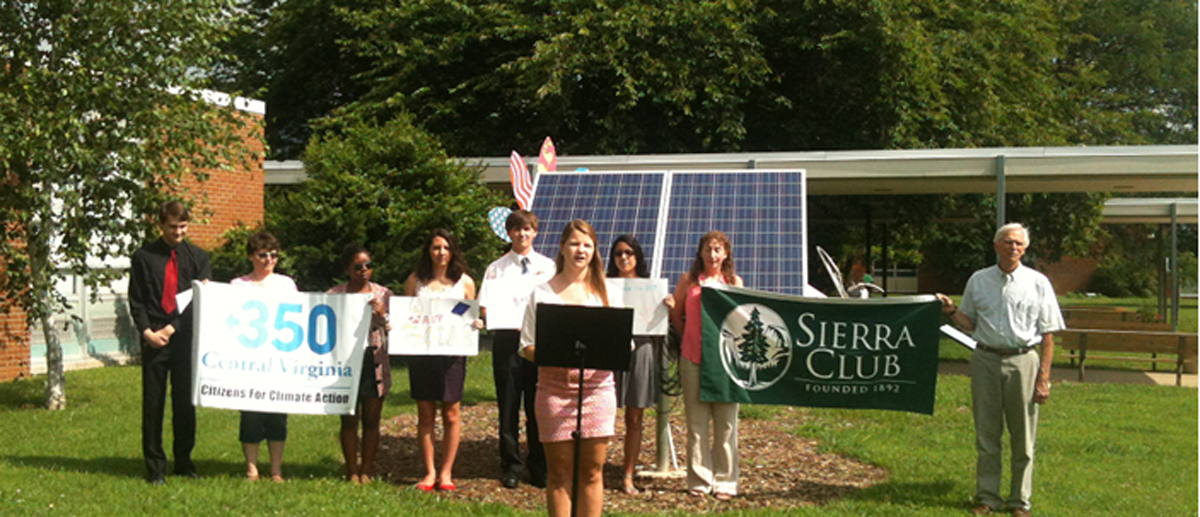
Albemarle County public school students held a 2013 press conference about getting solar atop their schools.
The biggest obstacle, Fischer says, was skepticism. All too often, teachers and other authorities would tell him, “Good luck with that,” and then offer no help. Soon after the Solar Schools Initiative began, an excited Fischer told his grandfather what he planned to do. The old man’s response? “I’ll believe it when I see it!”
At one Board of Supervisors presentation, a man took to the mic to decry the “brainwashed” students “killing jobs and creating an unreliable grid” by advocating for solar. The man even produced a photograph of the students to condemn them personally—unaware that those same students would take the stage immediately afterward and effectively counter his one voice with their 10. “I thought that was justice right there,” recalls Fischer.
By 2014, Fischer was off at college, but the campaign stayed in motion. In a moment out of a Lifetime movie, Fischer’s younger sister Elinor, in eighth grade at the time, walked a solar-powered robot across the desk of the Albemarle Board of Supervisors before hand-delivering petitions, bearing her signature as well as those of 1,300 students and county residents, in favor of solar panels on their schools.
“That really got the board’s attention,” Fischer says. “I think that was the first time they’d ever been addressed by an eighth-grader. So, they loved it!”
Student advocacy like Elinor’s was the movement’s beating heart, but the Solar Schools Initiative also hinged on internal support from players such as Lindsay Snoddy of the Albemarle County Public Schools Facilities Office, who worked up until the day of the final vote with Tony Smith of Secure Futures to answer the Board of Supervisors' questions about the feasibility of installing solar arrays. (It helped that the students were able to produce data proving that solar panels would save money by preserving roofs’ lifespans.)
By the time the final vote occurred in April 2015—nearly two years after Fischer launched the campaign—the board members unanimously supported the project. When Governor Terry McAuliffe cut the ribbon at a solar panel-decorated school in 2016, Fischer made sure his grandfather was there to see it.
Since then, the Solar on Schools Initiative has partnered with Secure Futures—where Fischer now works as a program coordinator—to install 1.2 megawatts atop Virginia public schools in Albemarle County and beyond. Fischer stresses the importance that the campaign can—and should—be replicated, and that renewable energy is everyone’s issue.
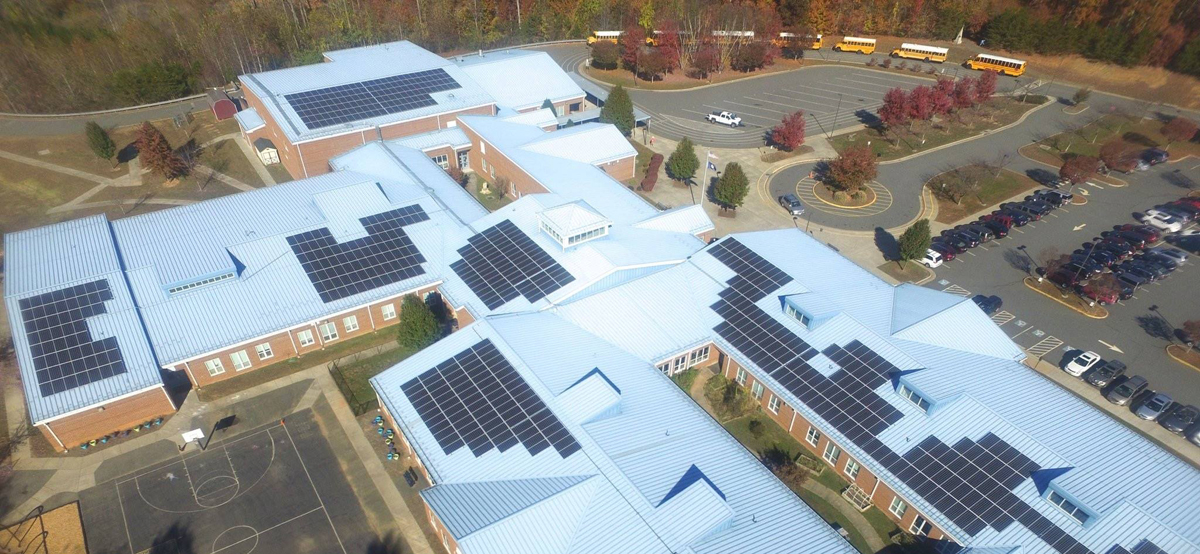 “Especially in this time of political upheaval that we’re facing in this country, solar is something that can bring people from all sides of the aisle together,” he says. “The solar registration that allows power purchase agreements [through which schools lease solar arrays for free, but agree to purchase the power they produce] was signed by a Republican and enacted by a Democrat. This is a positive environmental action that students and their communities can take, and I just hope we can serve as a model for other school systems to go solar.”
“Especially in this time of political upheaval that we’re facing in this country, solar is something that can bring people from all sides of the aisle together,” he says. “The solar registration that allows power purchase agreements [through which schools lease solar arrays for free, but agree to purchase the power they produce] was signed by a Republican and enacted by a Democrat. This is a positive environmental action that students and their communities can take, and I just hope we can serve as a model for other school systems to go solar.”
Adds Smith, “If you get it done in Virginia, you can do it anywhere.”
 The Magazine of The Sierra Club
The Magazine of The Sierra Club

